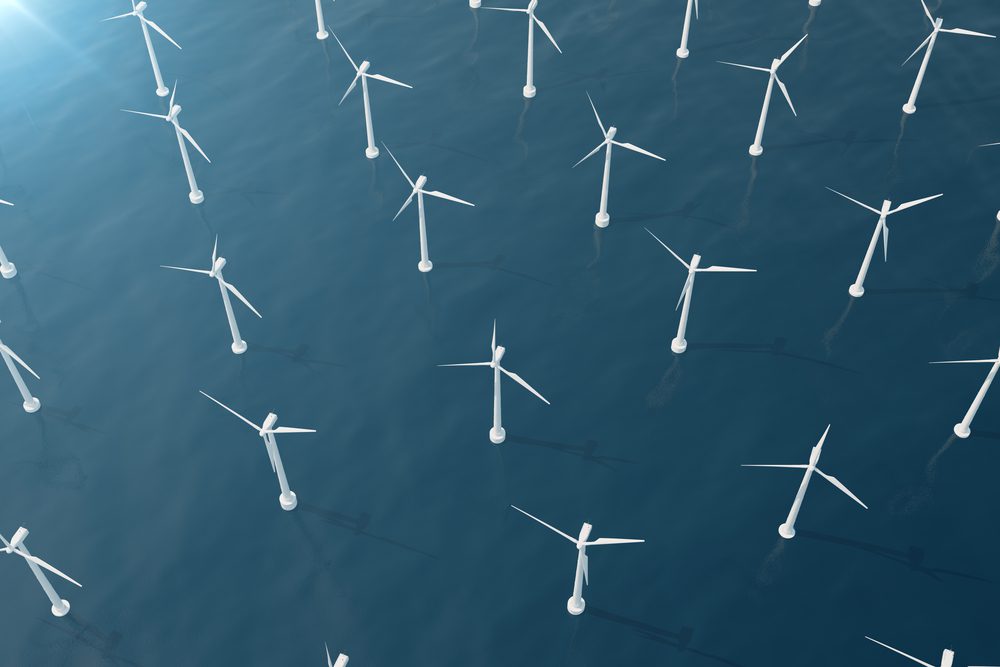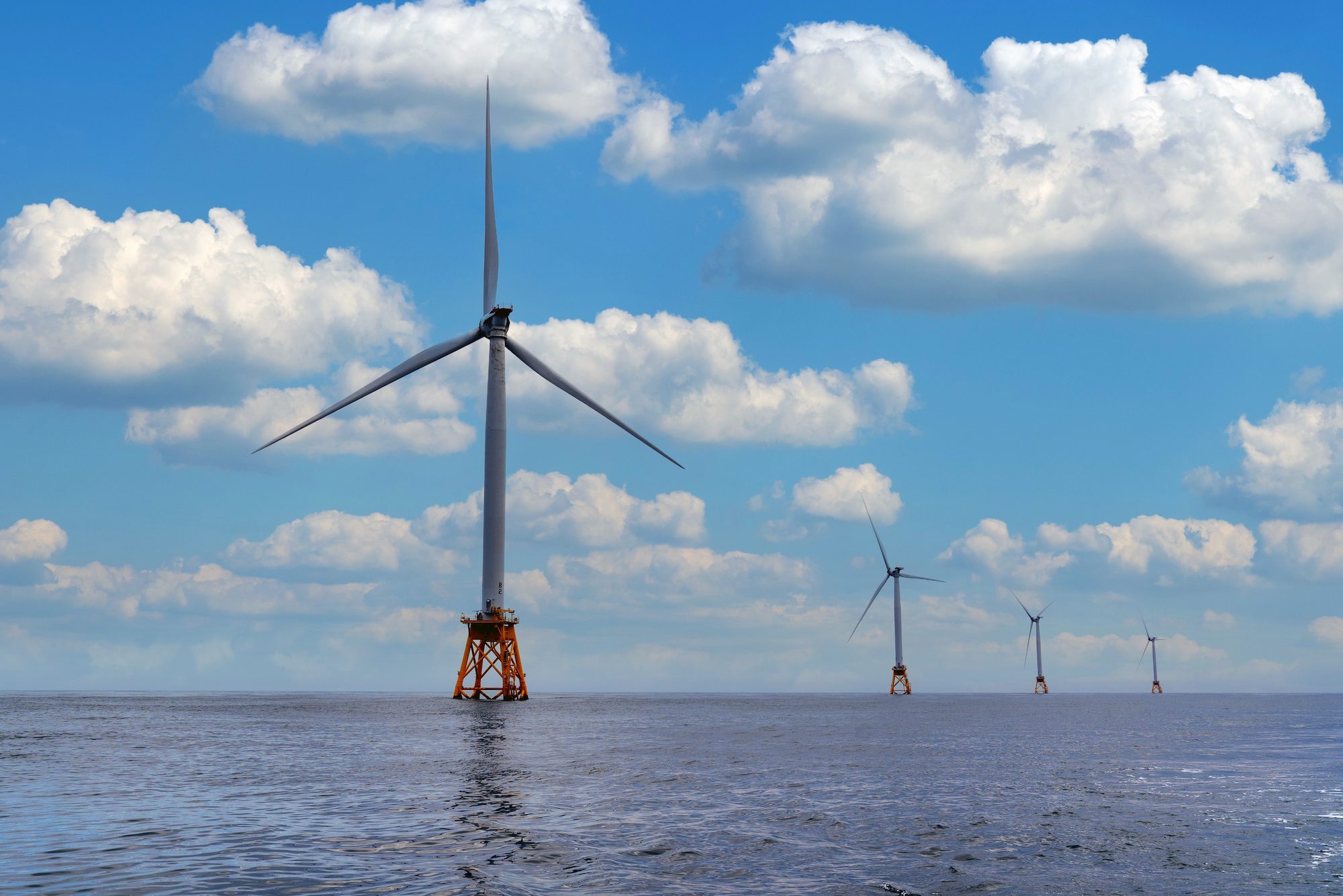By Carly Wanna, Jennifer A Dlouhy and Josh Saul
(Bloomberg) –The offshore wind industry has a 40-ton problem on its hands.
Since early December, close to two dozen large whales have washed up on or near beaches on the US Atlantic coast, and about a third of the so-called strandings have occurred on the shores of New Jersey. It’s unclear what exactly is fueling the deaths, but an unlikely coalition of wind opponents, local environmental groups and conservative talk show hosts have zeroed in on offshore wind as the culprit. They argue that projects in development are disrupting marine life and contributing to the unusually high number of deceased whales.
Government officials and the companies behind those wind projects remain firm: There is no evidence linking the whale mortalities to ongoing offshore wind development. They say New Jersey’s offshore wind ambitions are continuing as planned.
“Groups opposed to clean energy development are spreading misinformation,” said JC Sandberg, chief advocacy officer at American Clean Power Association, an industry organization. “They’ve seized on an opportunity to try and stop clean energy deployment along the East Coast.”
In January, a group of conservation organizations, led by Clean Ocean Action, and a coalition of a dozen New Jersey mayors penned two separate letters calling on Washington officials to halt offshore development activities near the state. In the weeks since, the issue has gained national attention. Climate-consciuos news outlets are fact-checking the campaigns against offshore wind, while conservative talk show hosts such as Tucker Carlson claim outright that wind projects are killing whales. Some of those blaming offshore wind also have ties to conservative groups that have long opposed clean energy.
For all the finger-pointing, everyone does agree that a lot of whales are dying. The National Oceanic and Atmospheric Administration says an “unusual mortality event” for humpback whales along the Atlantic coast has been ongoing since 2016, well before the start of any significant offshore wind development there. Of the approximately 180 whale strandings NOAA has tracked since then, close to half have been examined. Roughly 40% showed evidence of a ship strike or entanglement connected to the cause of death.
None of those whale deaths have been linked directly to offshore wind development, but some marine scientists and wind-power foes argue that the lack of a proven connection doesn’t rule out the existence of one. Critics worry that the activitiesassociated with offshore wind development, such as the driving of supports into the sea floor, can harm marine life.
Sean Hayes, chief of the protected species branch at NOAA’s Northeast Fisheries Science Center, warned ocean energy regulators last year that “additional noise, vessel traffic and habitat modifications due to offshore wind development will likely cause added stress” to whales and “result in additional population consequences” to the species.
Read Also: US Ignored Own Scientists’ Warning in Backing Atlantic Wind Farm
Environmental groups also emphasize that, while the latest deaths aren’t tied to ongoing activity, more needs to be done to protect marine life from an array of threats, including future wind farm construction. “Any type of ocean industry is going to pose risks to the environment,” said Alison Chase, a senior policy analyst with the Natural Resources Defense Council. It’s especially important to advance this new industry in a smart way because “ocean life is already struggling to adapt to climate change and has been stressed from decades of pollution and habitat destruction.”
A representative for New Jersey Governor Phil Murphy told Bloomberg in a statement on Friday that New Jersey will continue to pursue its offshore wind goals. “We know that many residents, both in our shore communities and across the state, share our genuine concern for marine life and its survival,” it says. “But we also know that there are those out there who are motivated not by a concern for our environment but by their own political ideologies and opposition to the very efforts that will preserve and protect our environment for generations to come.”
A 40-ton PR problem
The controversy has created a new headache for wind developers, who along with ACP are pushing back on the claims that their projects are hurting marine life. “We’re working hard to get the facts into the hands of local communities,” Sandberg said.
Among those talking points: ACP says offshore wind vessels account for just 2% of marine traffic along the East Coast, operate under strict regulations governing speed limits and are staffed with outside observers who watch for any disturbance to marine life.
Representatives for wind developers Vineyard Wind and Ørsted AS said they are focused on the safety of marine wildlife and echoed the point that their vessels are highly regulated. “Ørsted-contracted vessels have not experienced any whale strikes during offshore survey activity in the US,” a representative for the company said in an email.
Whale deaths are only the most recent obstacle for offshore wind. Inflation, high interest rates and supply chain woes have already threatened to derail projects along the US East Coast, and the industry has plenty of experience with negative headlines and public opposition scuttling its plans. A big push to build a wind farm off the coast of Massachusetts was nixed in 2017 partly due to wealthy opponents who didn’t want to see the turbines from their beach houses.
Any delays to wind development along the northeastern shoreline could come at a high cost. Developers spent a record $4.4 billion last year just for the rights to install turbines off the coast of New York and New Jersey, in a blockbuster auction that underscored the surging enthusiasm for renewable energy. Building the actual wind farms will take much more investment, with a $10 billion price tag for some of the biggest projects. By 2030, total capital expenditures to achieve the country’s offshore wind targets could total some $100 billion, according to obne estimate that has been cited by the US Department of Energy.
The companies building wind farms publish weekly reports describing their vessels and the work being performed; recent activity in the region has focused on site preparation. Vineyard Wind, for example, disclosed that eight vessels were laying undersea cables across Nantucket Sound off the coast of Massachusetts. A report from Avangrid Inc. shows that the utility is doing underwater drilling in its lease area, also off Massachusetts.
While offshore wind may not be perfect, supporters say it still beats the alternative: continuing to burn fossil fuels that are raising the world’s temperature. Elizabeth Klein — the newly appointed director of the US Bureau of Ocean Energy Management, which oversees the industry — told Bloomberg in a Feb. 10 interview that while climate change creates urgency in the push for offshore wind, federal regulators are still moving carefully.
“There is an import to this work, but we are doing it, I think, in a really deliberate and respectful way to the concerns that communities have and making sure we hear that feedback, we incorporate it where we can and continue to move forward in a way that implements our mission of safely and responsibly managing energy development in the outer continental shelf,” Klein said.
Many Jersey Shore natives already had issues with local wind projects. Prior to this winter’s mammalian frenzy, beachside residents had developed a list of grievances with the turbines, including their high price tag and appearance.
“We believe that it’s going to destroy our tourism industry,” said Suzanne Hornick, a resident living in Ocean City, New Jersey, and a member of Protect Our Coast NJ. “When people come to Ocean City, they don’t want to look at an industrial park.” Meanwhile, companies developing the turbines argue that even on a clear day they will only be slightly visible.
On Sunday afternoon, Hornick plans to attend a Save The Whales rally on the Point Pleasant Beach boardwalk, where locals will call for an end to the wind farm construction. Their timing couldn’t be better. “It’s World Whale Day,” she said.
© 2023 Bloomberg L.P.

 Join The Club
Join The Club











